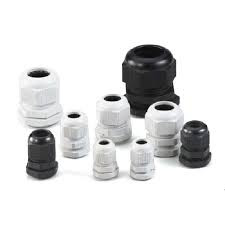How Do Glands Cable Work?
Introduction
Cable glands are tools which are dynamic when terminating
cables in harsh or hazardous sets.
This is where sealing, ingress protection and why cable gland is earthling is vital.
Its role is to securely pass a tube, wire, or cable through an addition.
They deal stress release and are also made to comprise flames or electrical parts which may take place in hazardous settings.
What’s additional?
They similarly act as a seal, ending exterior impurities from
causing any loss to the electrical system and the cable.
Some of these contaminants are:
Fluids,
Dirt,
Soil
Finally, they stop cables from being dragged and twisted out
of the machine.
That’s because they help to offer a harmless and steady
connection between the machine and cable to which it’s connected.
In this guide, we will
support you better understand how cable glands work.
Let’s get started
Cable Glands and Cable
Gland Parts
Cable glands are known as ‘mechanical cable access devices’
that are used in combination along with wiring and cable for:
Automation systems (e.g. data, telecoms, power, lighting)
Electrical, instrumentation & controller
The main functions of a cable gland are to serve as sealing
and terminating device.
It confirms the security of the enclosures and electrical
equipment, including the delivery of:
Added environmental sealing
At the cable entry idea, keeping the ingress safety rating of
the enclosure with the assortment of appropriate accessories dedicated to doing
this purpose
Additional sealing
On the area of the cable arriving the inclusion, if a high
level of ingress protection is required
Holding force
On the cable to guarantee satisfactory levels of mechanical
cable ‘pull out’ confrontation
Earth continuity
In the case of an armored cable, once the cable gland structures
a metallic construction.
In that case, cable gland might be tested to make assured
they can endure an enough peak short circuit fault current.
Environmental security
Through sealing on the exterior cable sheath, without wetness
and dust from the instrument or electrical enclosure
You see:
Cable glands could be complete from non-metallic to metal
materials.
Or it can be a mixture of both that might also be resistant to erosion.
It’s resolute by collection to a standard, or by corrosion resilient checks.
If utilized in volatile settings in specific, it’s important that cable glands are accepted for the chosen type of cable.
They must also keep the equal of defense of the equipment to
which they’re connected.
One of the highest things about cable glands is that they have an IP68 water-resistant function.
That means that can they can be used to make watertight leaving
points from severe and adverse situation enclosures and through bulkheads.
For you to use them:
The cable gland compresses a cap into the curved cable.
It stays ingress of particles or water which could cause everlasting loss to the electronic devices.



Comments
Post a Comment